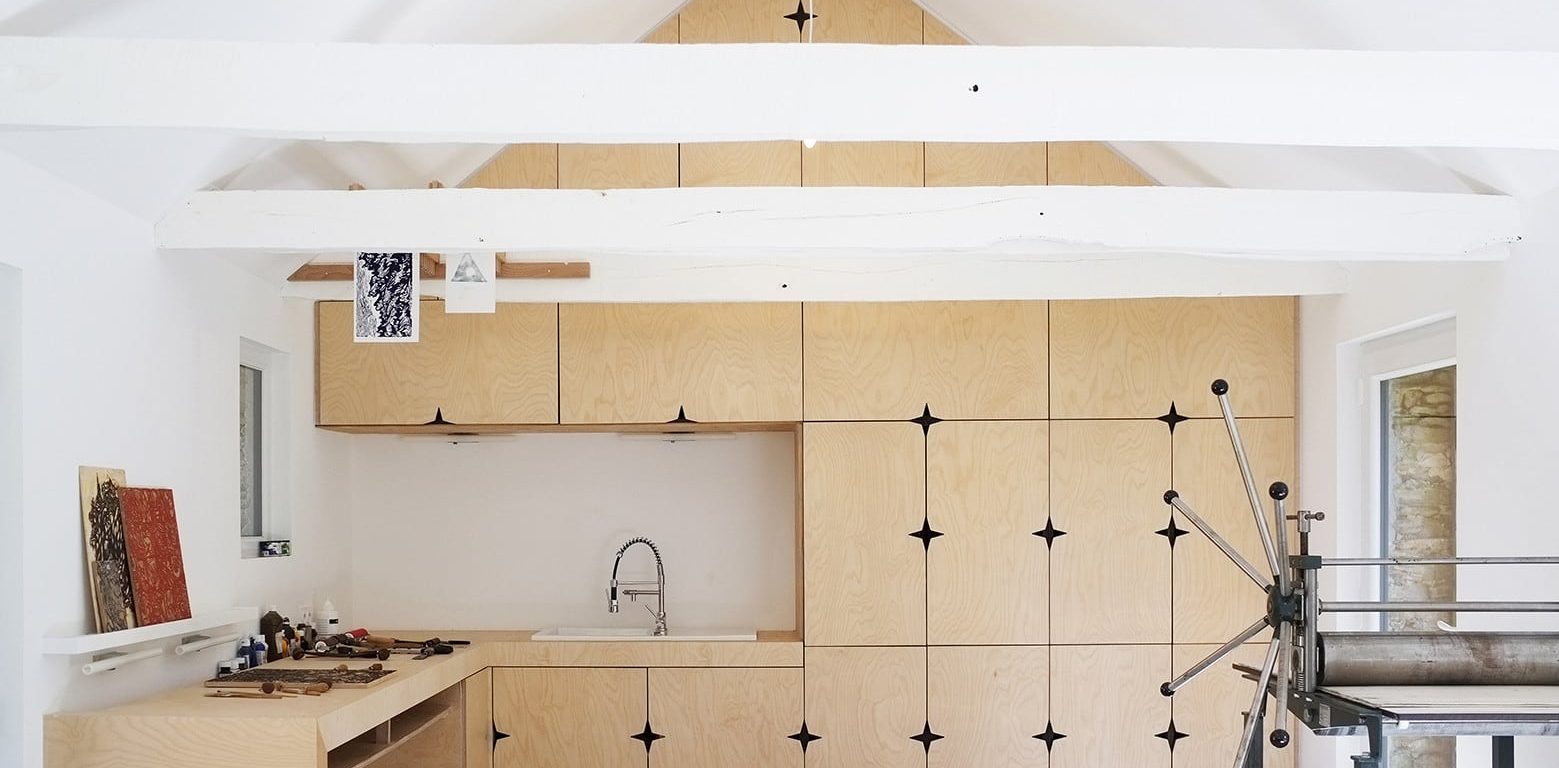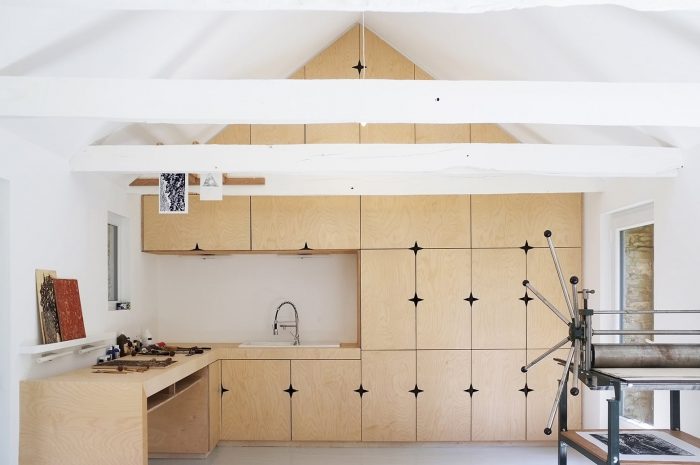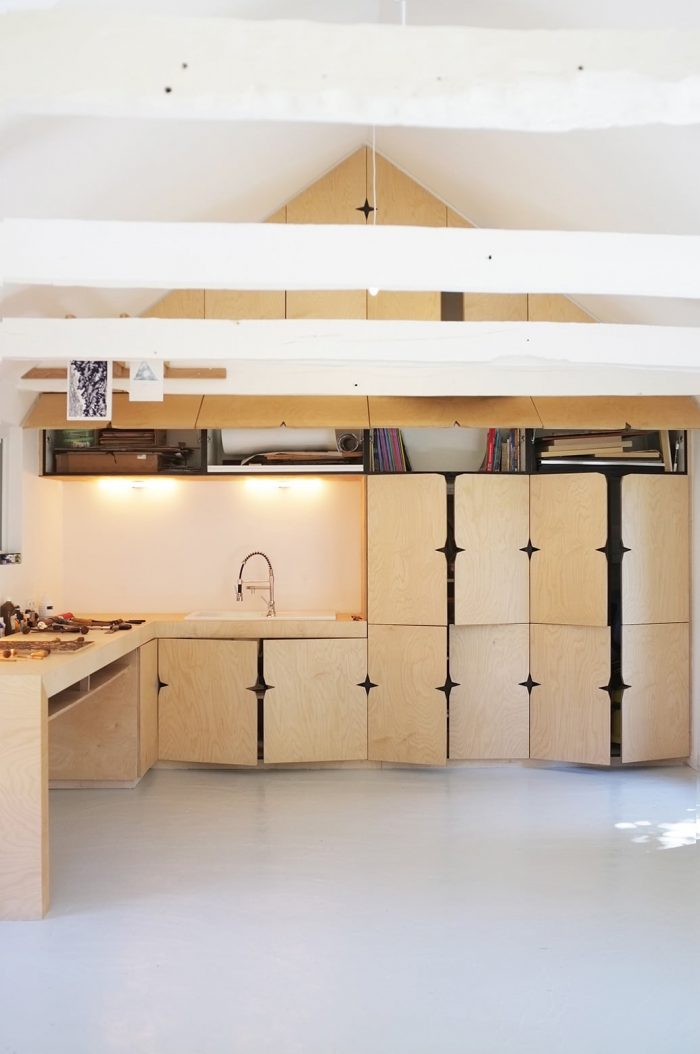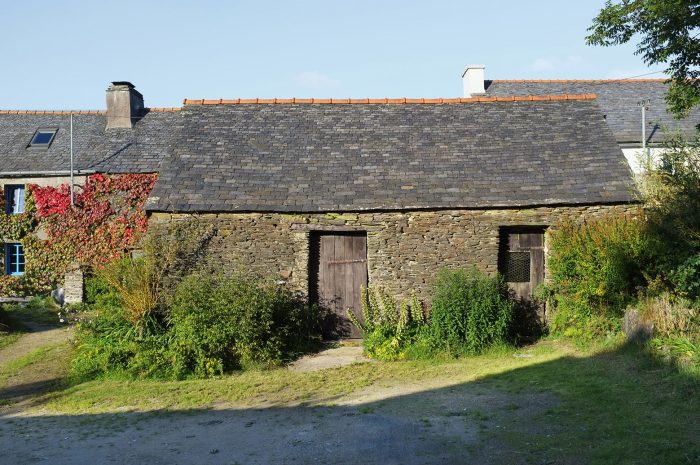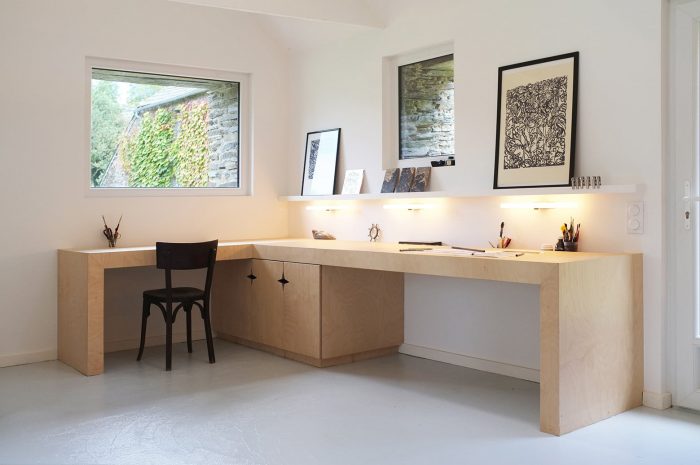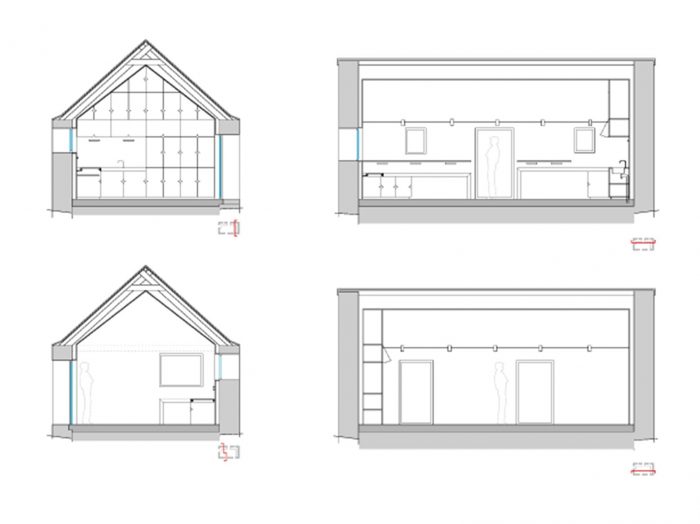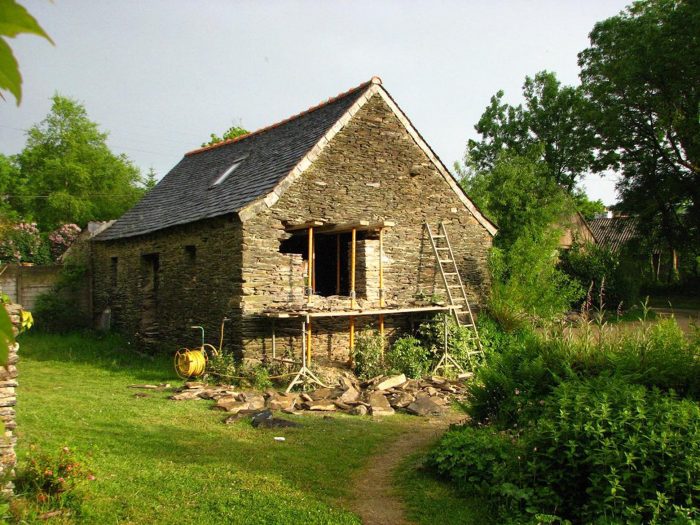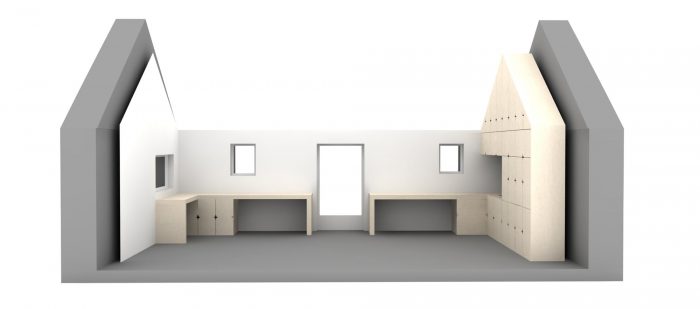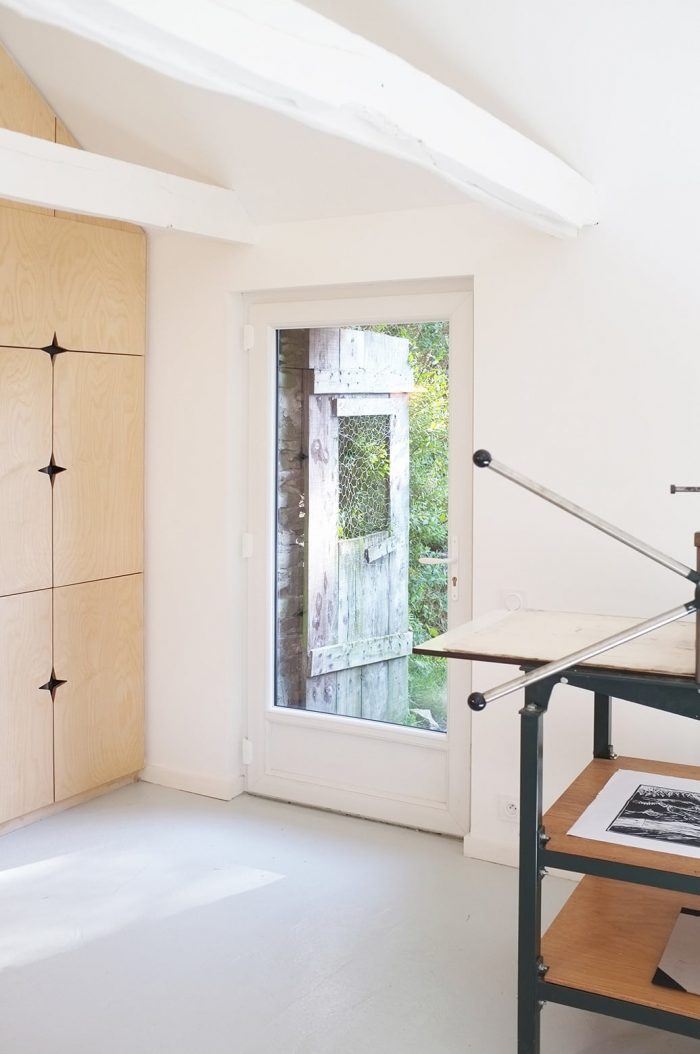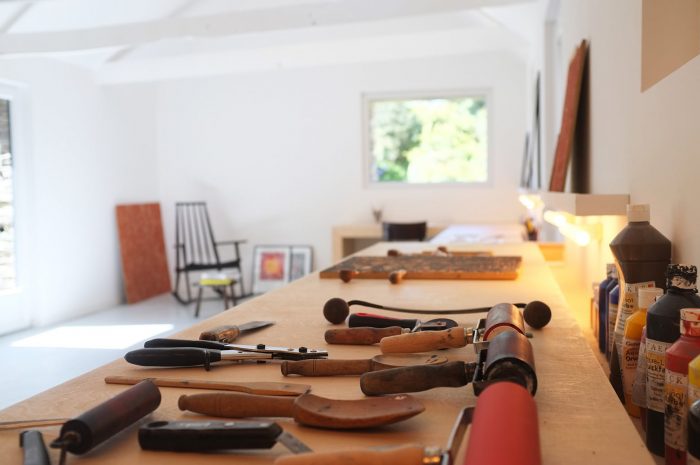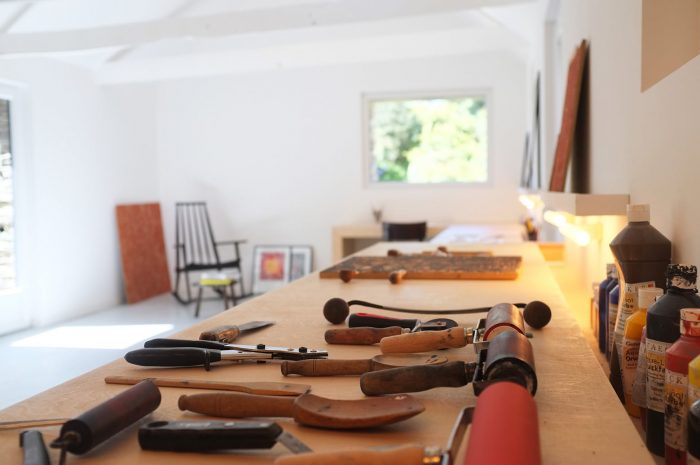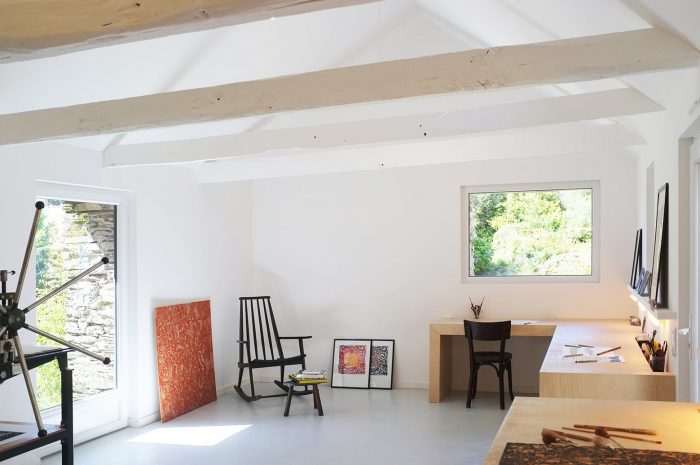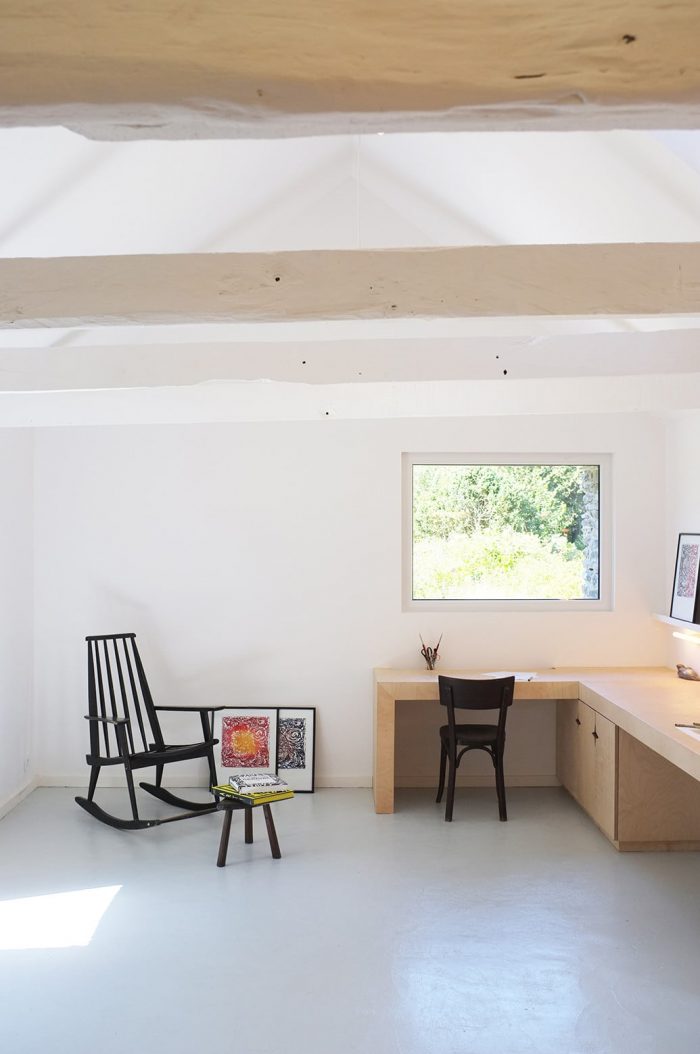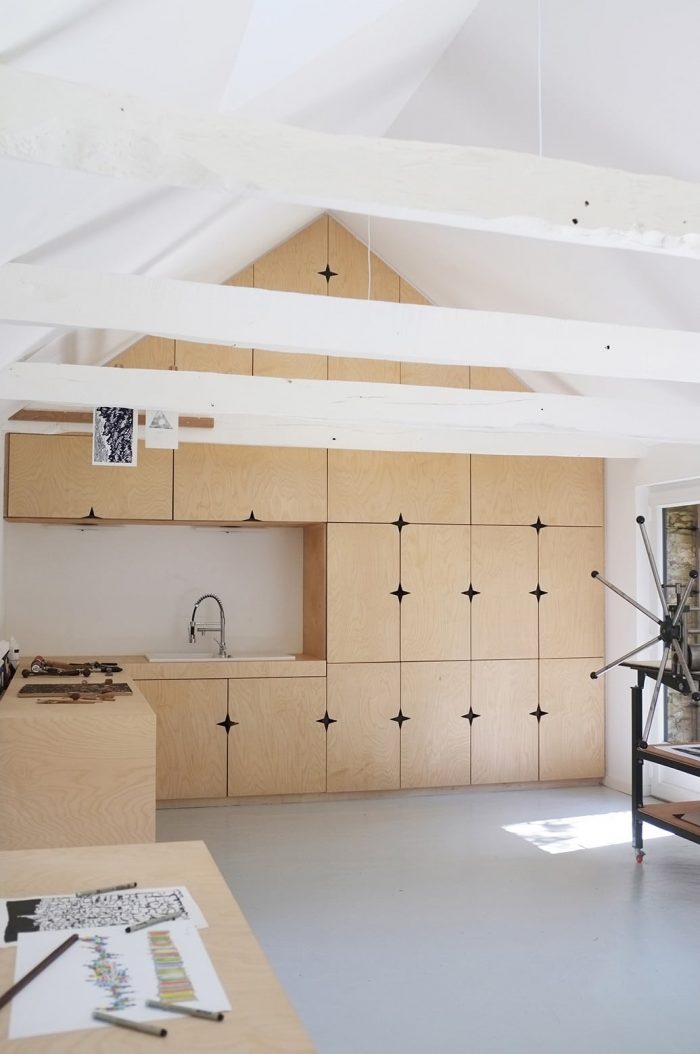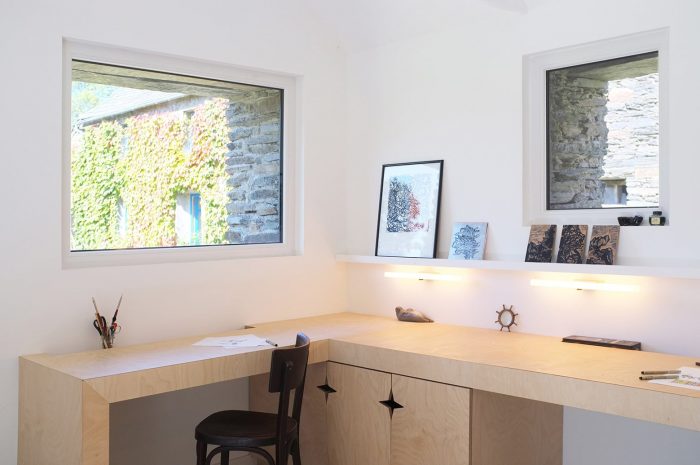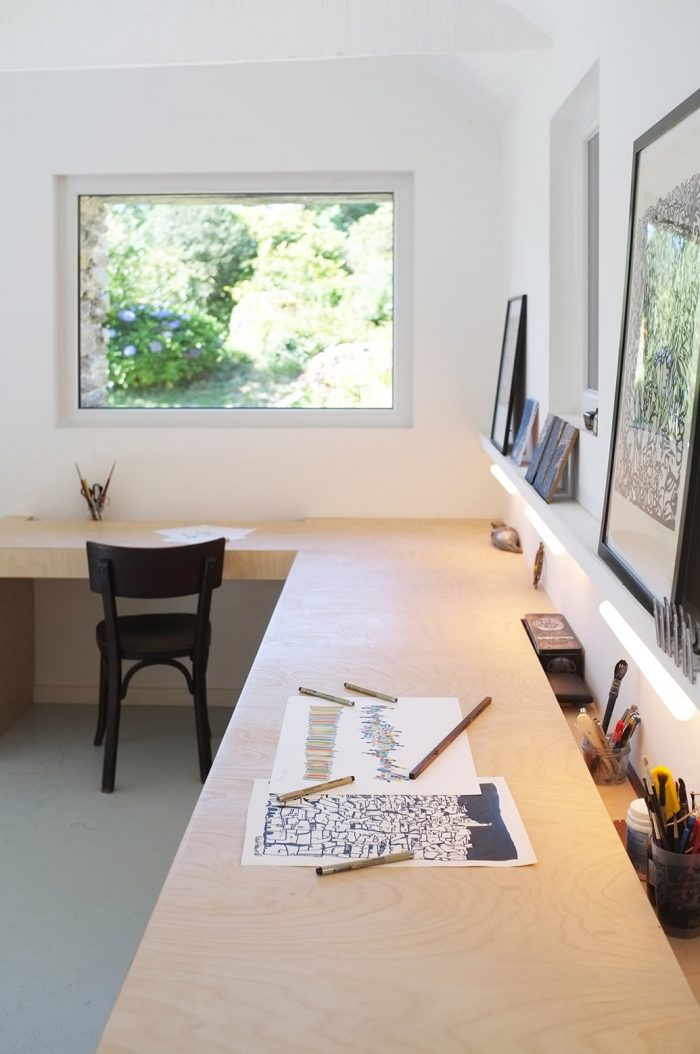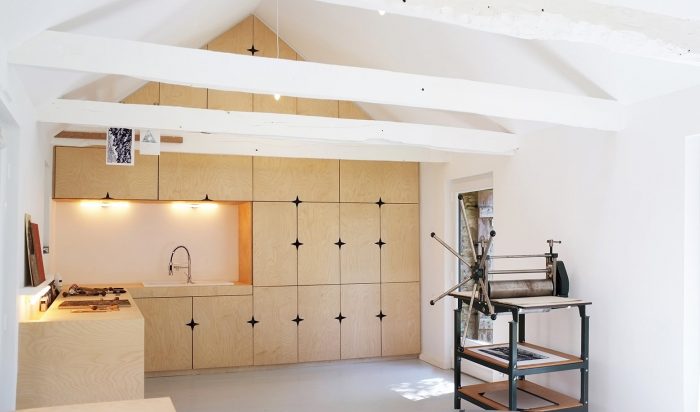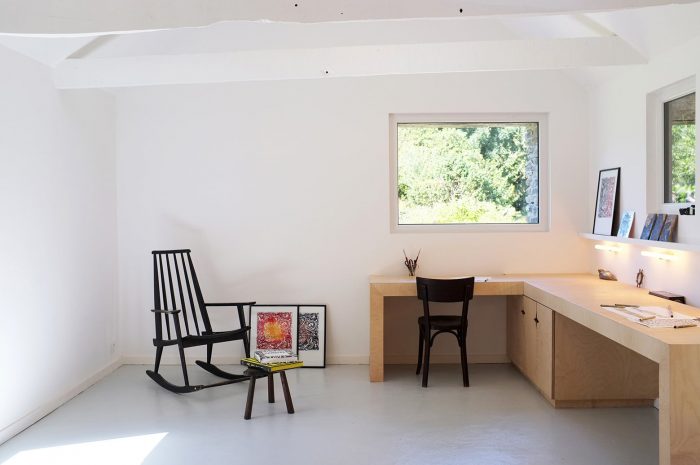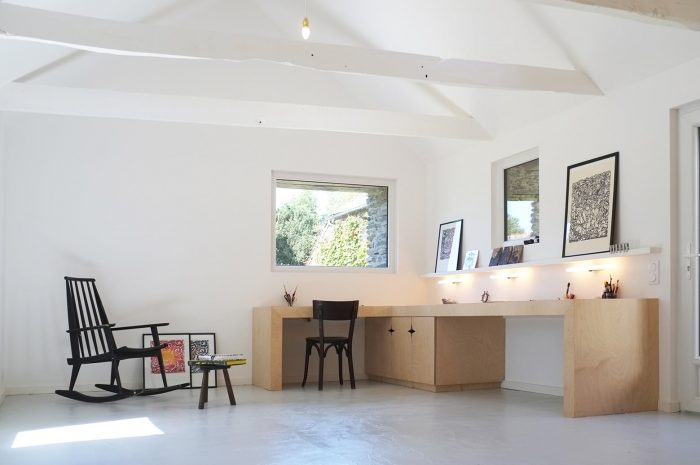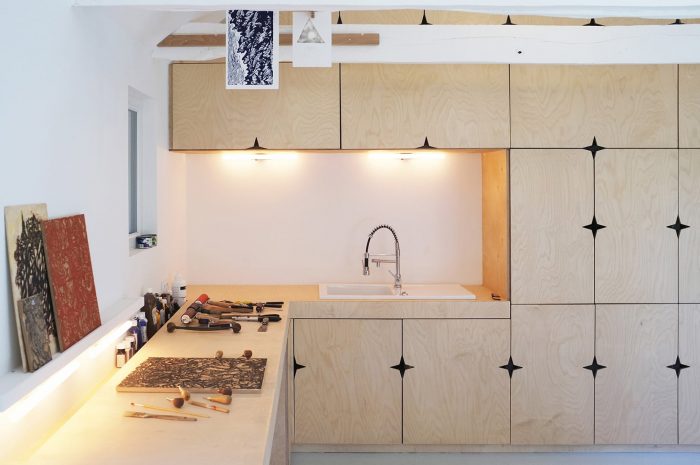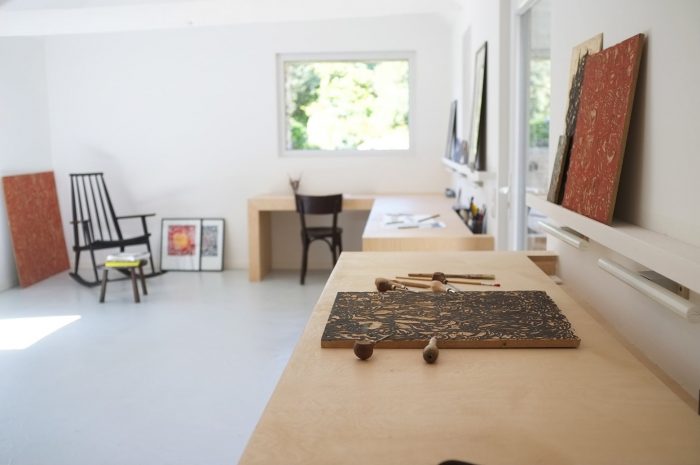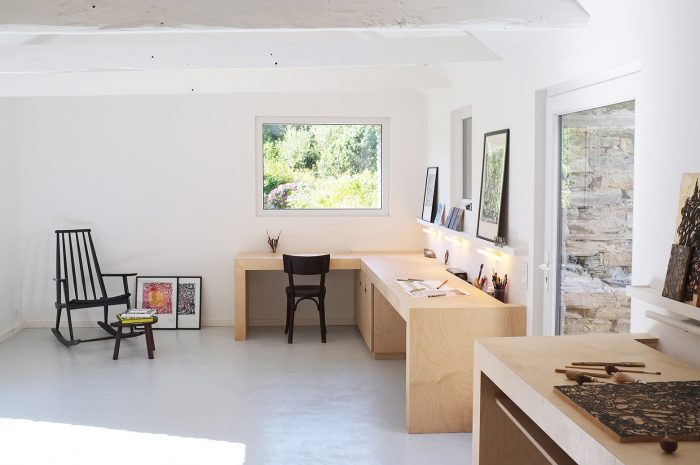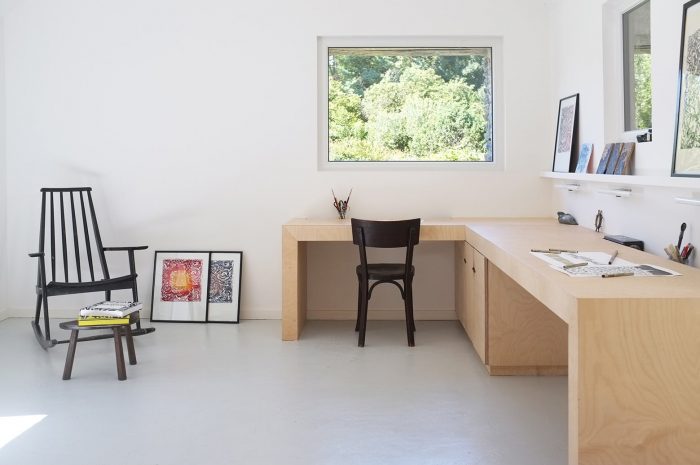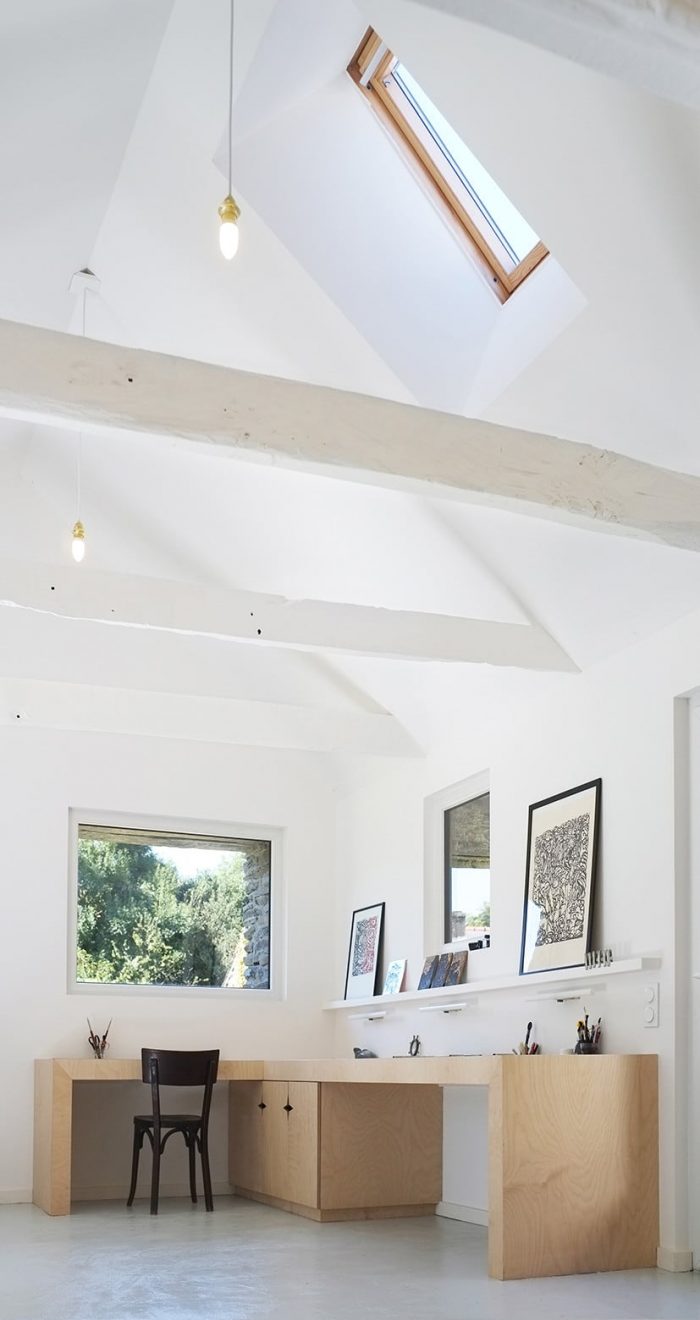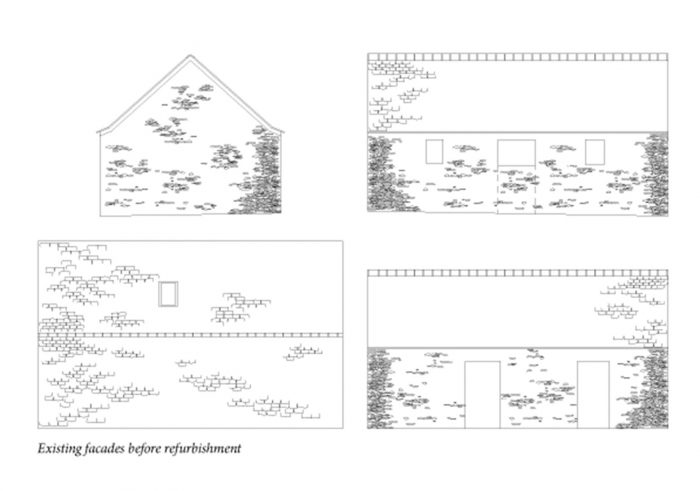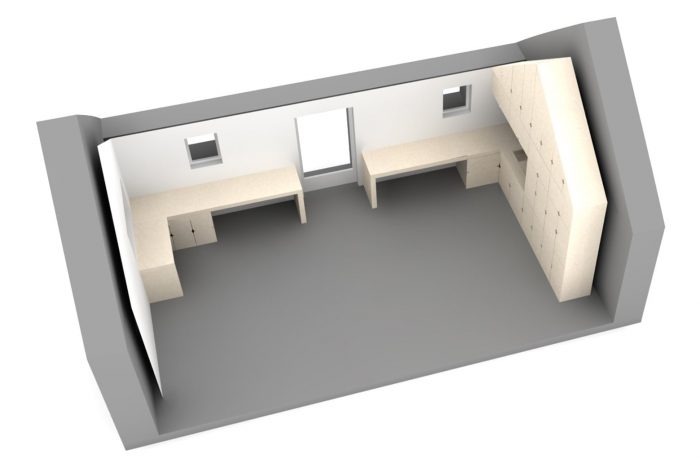我们处在一个到处是矿物的土地上。房屋有厚厚的墙,以防止从西方吹来的风,然而,当阳光温暖到来时,它们也是一个障碍。然而,艺术家希望创造一个可以发光的、舒适的、向周围景观开放的地方。他希望有一个致力于他的兴趣、艺术、绘画和雕刻的地方。
We’re in a land where minerals are everywhere. Houses have thick walls to protect from the winds blowing from the west however, they are also an obstacle when sunwarmth arrives. Nevertheless the artist wished to create a place that could be luminous, cosy and opened to the surrounding landscape. He wanted a place dedicated to his interests, art, drawing and engraving.
为了找到满足他期望的方法,他请建筑师Gwendal Hervé和Monique Bastos在一个十七世纪的老谷仓里构思了一个艺术家工作室,它与他和家人居住的建筑相连。根据他们自己的经验和对当地建筑环境的观察,建筑师们提出了一个双面的项目:它被变成了该地区房屋的内部,但他们也想创造一个热和表现力会亮到外面的地方。
To find the way to to meet his expectations, he asked architects Gwendal Hervé and Monique Bastos to conceive an artist studio inside an old barn from the XVIIth century, attached to the building where he lives with his family. According to their own experience and observations on the local architectural context, architects proposed a double-faced project : it was turned into the inside as the houses of the region, but they also wanted to create a place where heat and expressivity would bright to the outside.
在外面,他们倾向于保护当地的建筑特征。为了保持几个世纪以来与周围建筑的对话,他们保留了片岩石的墙壁。新的玻璃窗是由当地工匠打开的。门窗框架被涂成无烟煤色,并被隐藏在厚重的石墙中。
On the outside, they preferred to conserve local architectural identity. In order to keep the dialogue settled for centuries with buildings around, walls in stones of schist were conserved. The new glass window was opened by local craftsmen. Windows and doors frames were painted in anthracite colour and were hidden in the thickness of the heavy stones walls.
与外墙粗糙的深色石头相比,内部是光滑的,完全用白色油漆。它被设想为一个真正的明亮的避难所。玻璃窗朝西打开,创造了一个新的花园景观,并允许柔和的光线从下午到黄昏进入。
In contrast to the rough dark stone of the facades, the inside is smooth and completely painted in white. It has been conceived as a real refuge for brightness. The glass window was opened towards the west, creating a new view to the garden and allowings soft light to get in from afternoon until twilight.
为了使它适应新的用途,谷仓被完全清除了它以前的功能。 为了翻新里面的部分,必须建造一个混凝土地板。最后是密封空气间隙,并通过投掷石灰对墙壁进行隔热处理,最后是新的水电网络。在木质框架得到加强后,还涂上了一层绝缘材料。这确实允许在建筑内部创造一个外壳。
In order to adapt it to new uses, the barn was totally cleared from what remained from its previous functions. To refurbish the inside part a concrete floor had to be made. It was completed by the sealing of air gaps and the insolation of the walls by throwning lime and finally new water and electricity networks. After the timberframes being strengthened, a coat of insulating material has been set. It really allows to create a shell inside of the building.
为了满足艺术家的需求和兴趣中心,建筑师想象了一个室内设计,将收回传统的家具或生活方式的主题和词汇。如果家具主要由雕刻强调,它们也可能是简单的,并显示出原木的巨大方面。建筑师们遵循这些规则来设计工作板和书架。桦木胶合板因其浅色和暖色而被选中,由当地木匠出色地制作。
To meet the needs and the the artist’s centers of interest, the architects imagined an interior design that would take back the themes and the vocabulary of traditionnal furniture or way of life. If the pieces of furniture are mainly underlined by carvings, they may also be simple and show out the massive aspect of the raw wood. The architects followed these rules to design work boards and bookshelves. Birch plywood selected for their light and warm colours, was splendidly created by a local carpenter.
这座小楼不仅仅是一个简单的艺术家工作室,现在是一个聚会的地方和一个通道。对于周围的居民来说,它也是一个好奇的地方,为他们自己的房子寻找灵感。这不是证明了一个项目成功的关键往往在于当地和文化背景吗?所以,这个完全满足了艺术家的小建筑,现在已经准备好了它的故事的新篇章……
More than a simple artist studio, this small building is now a place of meetings and a passageway. It’s also a place of curiosity for the inhabitants of the surroundings in search of inspiration for their own houses. Doesn’t it prooves that the key to a project’s success often lies on local and cultural context ? So, this small building, which entirely satisfies the artist, is now ready for new chapter of its story…
Architects : Modal Architecture
Year : 2014
Photographs :Monique Bastos & Gwendal Hervé
City:SIZUN
Country:France

